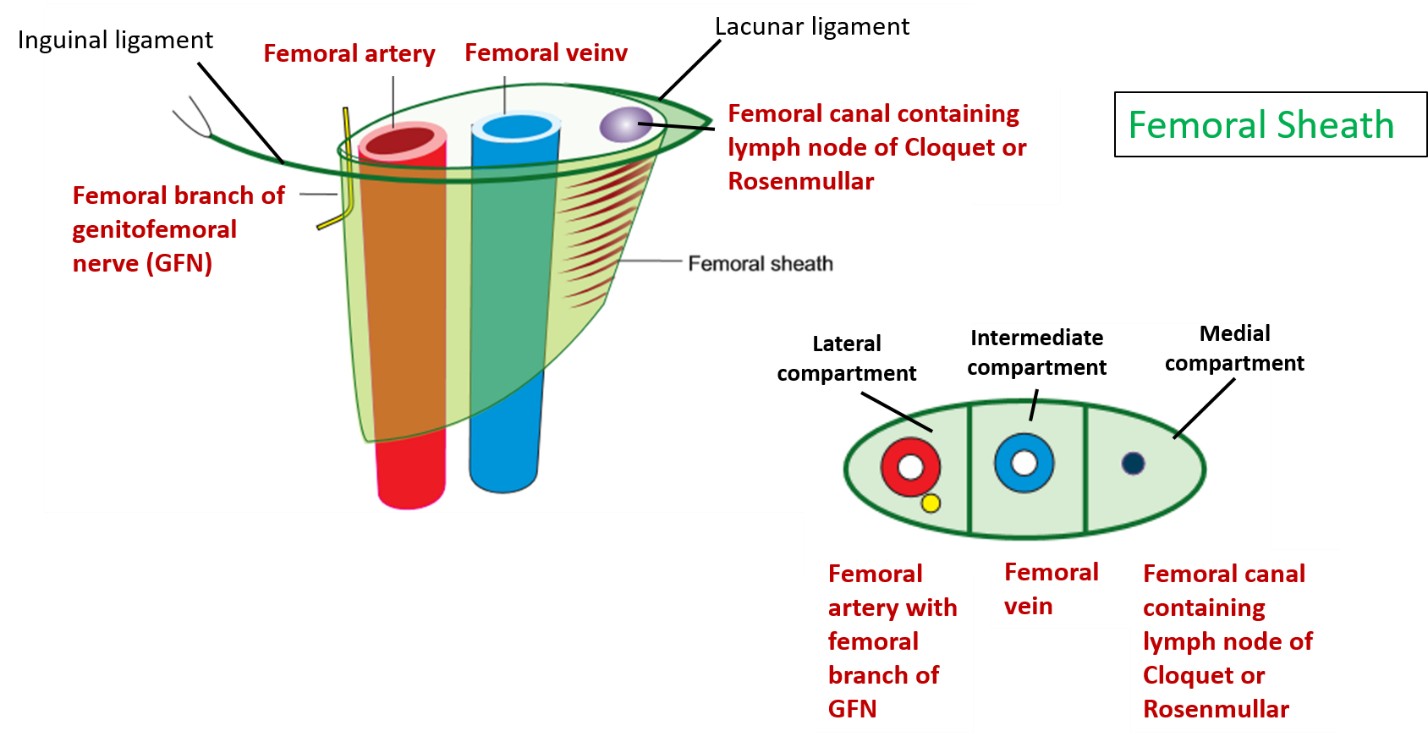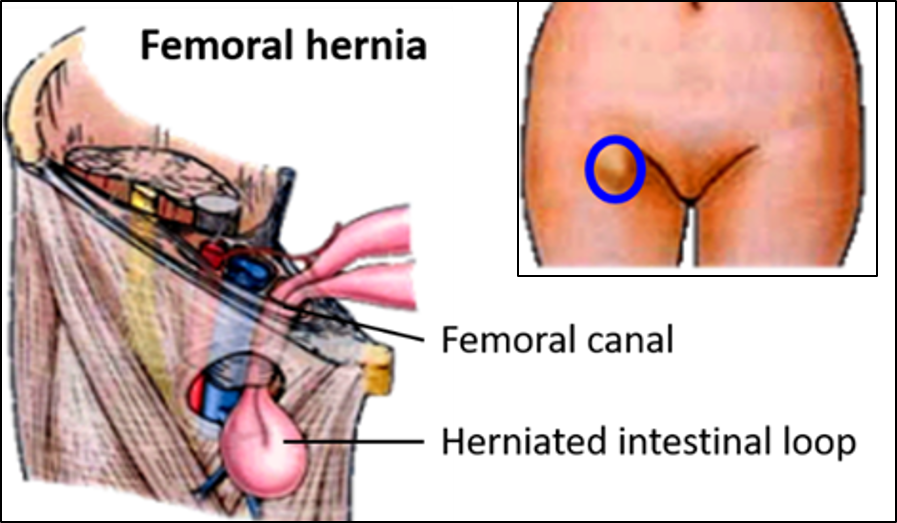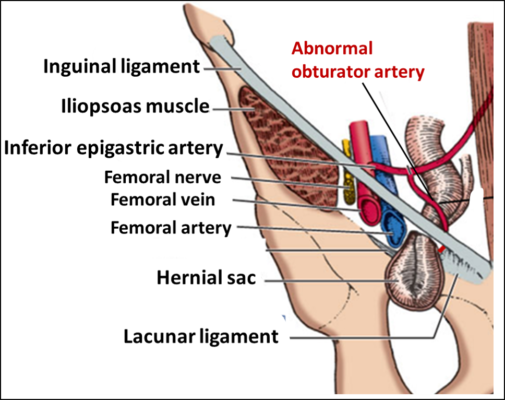Advertisements
Describe formation, compartments and contents of Femoral sheath.
WATCH VIDEO ON FEMORAL SHEATH &FEMORAL HERNIA [Click Here]
It is a funnel shaped fascial sheath that surrounds the upper part of femoral vessels and also encloses femoral canal.
Formation: It is formed:
- Anteriorly by fascia transversalis
- Posteriorly by fascia iliaca
Compartments and contents: It is divided into three compartments:
- Medial compartment: It is called femoral canal, is filled with areolar tissue and contain a lymph node (Gland of Cloquect) which drains glans penis/clitoris.
- Intermediate compartment: femoral vein passes through it.
- Lateral compartment: allows the passage of femoral artery and femoral branch of genitofemoral nerve.

What are the boundaries of Femoral canal?
- It is the funnel shaped medial compartment of the femoral sheath.
- Is 1.2 cm. long.\
- Contains some areolar tissue and a lymph node of deep inguinal group (Cloquet’s lymph node).
- Its upper end opens towards abdominal cavity and is bounded by femoral ring.
- Boundaries of femoral ring are:
o Laterally – femoral vein
o Medially – lacunar ligament
o Anteriorly – inguinal ligament
o Posteriorly – pectineal line of pubic bone.
* Femoral ring is closed above by extra peritoneal tissue called femoral septum.
Applied Aspect
Femoral hernia
The femoral canal is a potential point of weakness through which a hernia can occur. Femoral hernia is more common in females because femoral canal is wider in females as bony pelvis is wider in females and the femoral vessels are smaller in diameter.
- Femoral hernia is abnormal protrusion of abdominal content (e.g. small intestine) through femoral canal.
- The herniated structure enters the canal through the femoral ring, then bulge anteriorly through the saphenous opening and bends superolaterally towards the inguinal ligament.
- Strangulation of a femoral hernia may occur due to the sharp, stiff boundaries of the femoral ring.
- Femoral hernia lies inferior and lateral to pubic tubercle whereas inguinal hernia lies above and medial to pubic tubercle.

- Femoral hernia has following coverings:
- Femoral septum
- Anterior wall of femoral sheath
- Cribriform fascia
- Surgical reduction of femoral hernia: Lacunar ligament has to be divided to relieve strangulation. Care has to be taken to ligate abnormal obturator artery which may run along the lateral margin of lacunar ligament (the abnormal obturator artery is the enlargement of the anastomosis between pubic branches of inferior epigastric and pubic branch of obturator artery). This abnormal obturator artery is in danger of being cut during incision of lacunar ligament as it lies close to the medial border of femoral ring (along lacunar ligament). This may cause severe bleeding.

